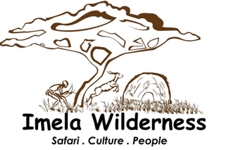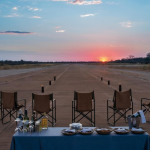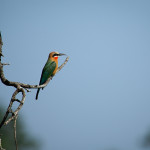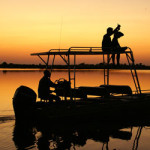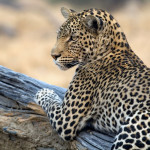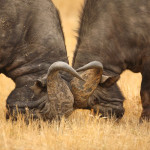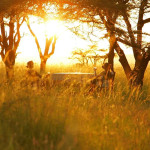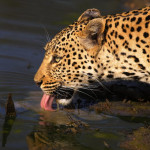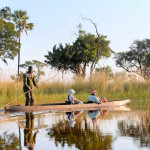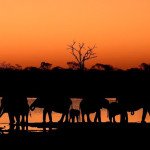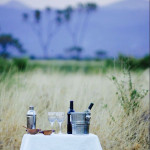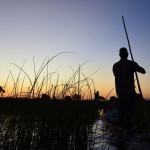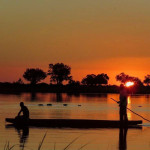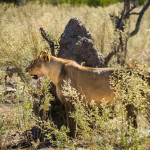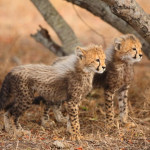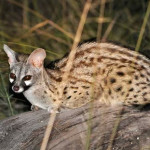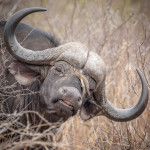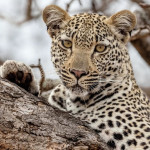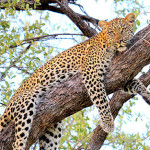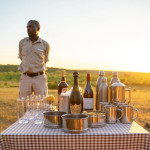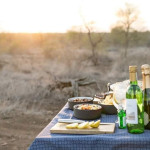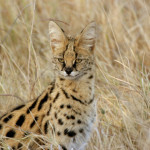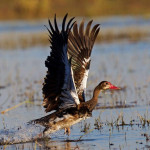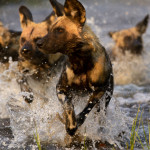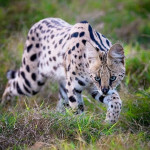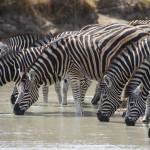
We currently have 2 Honeymoon Trips to offer,
Chobe & Wetlands Romantic Trail
Gallery
MOREMI ROMANTIC TRAIL
6 nights/7 days
MAUN > MOREMI/XAKANAXA > MOREMI/KHWAI > MAUN
Overview
Game Drives
Mokoro excursions
-
Scenic flights
-
Birding
This tailor-made adventurous romantic getaway affords you an opportunity to unwind and reconnect with your loved one in the true African Wilderness through game viewing of the big game, bird watching, scenic flights and mokoro excursions. This fly-in romantic safari includes a 6 nights stay and allows you an opportunity to enjoy the serenity and abundance of game in Greater Moremi Game Reserve while wining and dining.
Daily Activity
DAY 1: MAUN
After your arrival at Maun International Airport you will be met by Mack Air for your charter flight at approximately 14h00 to the Xakanaxa (Moremi) or Khwai airstrip (dependent on direction of travel) where you will be met by your guide. If you are staying in Maun prior to the safari, please request an airport transfer, Mack Air will liaise with your accommodation the day before to confirm the flight departure time.
Alternatively, if you are coming from one of the many safari lodges, you can organize to fly directly into Xakanaxa Airstrip with the lodges preferred charter company although we do request that these flights land only after 12h00 in order for our guide to be there to meet you. Spending our first three nights camping in the Xakanaxa region, we explore the surrounding wilderness on game drives during the day.
Wildlife: From the air only the larger animals are seen easily. These include large breeding herds of African elephant that live in the mopane scrub. On the open plains large herds of buffalo and lechwe can be seen and in the waterways rafts of hippopotami are a common sight. Once you land in Xakanaxa the smaller game can be found.
Birding: A good day for raptors with African Hawk-Eagle, Gabar Goshawk, Shikra, Little Sparrowhawk, Dark Chanting Goshawk, Tawny Eagle, Lesser Spotted Eagle* and Steppe Eagle* all inhabiting the mopane and adjacent woodlands.
Other birds common along this route includes most of Botswana’s hornbills including Red-billed, Southern Yellow-billed, African Grey, Bradfield’s and the Southern Ground Hornbills. A large number of brood-parasites may also be seen. Diederick Cuckoo*, Levaillant’s Cuckoo*, Jacobin Cuckoo*, Great-spotted Cuckoo*, African Cuckoo*, Common Cuckoo*, Shaft-tailed Whydah, Pin-tailed Whydah, Eastern Paradise Whydah, Greater Honeyguide, and Lesser Honeyguide.
DAY 2–3: MOREMI XAKANAXA (THIRD BRIDGE)
Moremi lies on the eastern extremity of the Okavango Delta. Habitats here range from wide-open floodplains, marshes, lagoons, papyrus fringed channels, vast stands of Miscanthus and Phragmites, woodland and savannah. As a result of the extremely variable habitat the diversity of both wildlife and birdlife is excellent.
Wildlife: Moremi is amongst the best game reserves in Africa for viewing the endangered African wild dog. Xakanaxa is home to a resident herd of several hundred buffalo whose range covers the territories of at least 4 prides of lion which may often be seen flanking the ever moving herd. Breeding herds of elephant move between their browsing areas in the mopane forests and the fresh water of the Okavango. Red lechwe are one of the more unusual antelope species and commonly found here.
Birding: The swampy areas of Xakanaxa are home to African Rail, Coppery-tailed Coucal, Black Coucal*, Red-chested Flufftail, African Crake*, Black Crake, Chirping Cisticola, Luapula Cisticola, Purple Swamphen, Allen’s Gallinule to name but a few. The open waters attract African Skimmer, Saddle-billed Stork, Yellow-billed Stork, Intermediate Egret, Goliath Heron, African Fish Eagle as well as the globally threatened Slaty Egret and Wattled Crane.
DAY 4: MOREMI KHWAI-NORTH GATE (TRAVEL DAY)
Wake up and have breakfast before we depart to Moremi Game Reserve-Khwai. It is situated in the eastern part of the Okavango Delta, bordering the Chobe National Park on the south-western part of the Park. The Moremi Game Reserve covers almost one third of the Delta. The Khwai River forms a boundary between the reserve and the community area. We spend the following two nights camping at an exclusive campsite in the community area, exploring the Khwai floodplains on game drives both during the day and at night.
The Khwai region boasts excellent populations of both bull elephant as well as breeding herds. Lion, leopard, serval and African wildcat are common predators of the region with wild dog and cheetah being less common. Buffalo use this area seasonally with large herds moving in during the summer rains. The swampy areas in the west are home to red lechwe. Other ungulates include tsesebe, blue wildebeest, giraffe, kudu, sable antelope, roan antelope and impala.
Common birdlife include Mecca’s, the uncommon Rosythroated Longclaw and the Bat-Hawk. Other interesting raptors here are Cuckoo Hawk (rare), Long-crested Eagle and Black Sparrowhawk. More commonly Tawny Eagle, Steppe Eagle, Lesser-spotted Eagle, Martial Eagle, Bateleur and African Hawk-Eagle. The waterways host Africa Rail, African Crake, Greater Painted Snipe, Allen’s Gallinule, Lesser Jacana and Lesser Moorhen.
DAY 5-6: KHWAI
We spend our time between the dry-land habitats of the lead-wood and camel-thorn woodlands and savannahs and the riverside and marshy back-waters of the Khwai.
Wildlife: The Khwai region boasts excellent populations of both bull elephant as well as breeding herds. Lion, leopard, serval and African wildcat are common predators of the region with wild dog and cheetah being less common. Buffalo use this area seasonally with large herds moving in during the summer rains. The swampy areas in the west are home to red lechwe. Other ungulates include tsesebe, blue wildebeest, giraffe, kudu, sable antelope, roan antelope and impala.
Birding: Truly one of Botswana birding Mecca’s. The westernreaches are prime habitat for the uncommon Rosy-throated Longclaw. The entire length of the river is hunting domain for the BatHawk. Other interesting raptors here are Cuckoo Hawk (rare), Longcrested Eagle and Black Sparrowhawk. More commonly Tawny Eagle, Steppe Eagle, Lesser-spotted Eagle, Martial Eagle, Bateleur and African Hawk-Eagle. The waterways host Africa Rail, African Crake, Greater Painted Snipe, Allen’s Gallinule, Lesser Jacana and Lesser Moorhen.
DAY 7: KHWAI-MAUN (TRAVEL DAY)
After breakfast we take a game-drive to the airstrip where you will be met by your charter flight back to Maun. Should you be flying on to a safari lodge, you can fly directly out from Khwai Airstrip to avoid returning to Maun. Please request that the lodge’s preferred air Charter Company collects you from Khwai Airstrip prior to 12h00.
This marks the end of your Safari.
These Safari may start first from Moremi and run in reverse at times for operational ease. Activities are all exactly the same but do just check routing if connecting with other camps or lodges for flight routes.
TOUR ENDS
Safari Accommodation
CAMPING NIGHTS:
6 nights camping
A non-participatory wild camping with en-suite facilities lodging (6 nights). Imela Wilderness will provide a bucket shower with warm water off the fire. Imela wilderness (also) provides, comfortable bedroll fully equipped with linen, towels, chairs with backrests and, tents (3×3 m meru tents), mosquito gauze on door & windows); are large and easy to erect. Imela Wilderness chef prepare fresh meals in the camp on site.
Note; All our tours are non-participatory, meaning we have enough staff to do the camp chores while you sit and enjoy your safari.
Details
Included in Your Safari
The quoted price includes all accommodation, park entry fees, excursions, and transfers.
ITINERARY INCLUDES:
- Park & Reserve entry fees
- Pick up and drop off at the airport
- Use of camping equipment (mattresses)
- Transport in 4X4 game viewing vehicle (game drive vehicle, trailer)
- Vehicle Fridge
- Tea/coffee and hot chocolate
- Professional Guide
- 2 Game drives per day
- Chef
- Mokoro activities (seasonal)
- Mokoro pooler fees
- Transfer flights
ITINERARY EXCLUDES:
- Scenic flight over the Okavango delta
- Boat cruise in Okavango delta
- Staff tips
- Premium wines
- Emergency evacuation
- Curios
- Insurance
- All flight tickets unless otherwise indicated
- Items of personal nature
- Any drinks at lodges or accommodation other than Imela Tented camps unless stated.
Easy Payment Options
FROM USD 2,395 PER PERSON
40% Deposit to confirm booking. Balance due 6 weeks prior to departure.
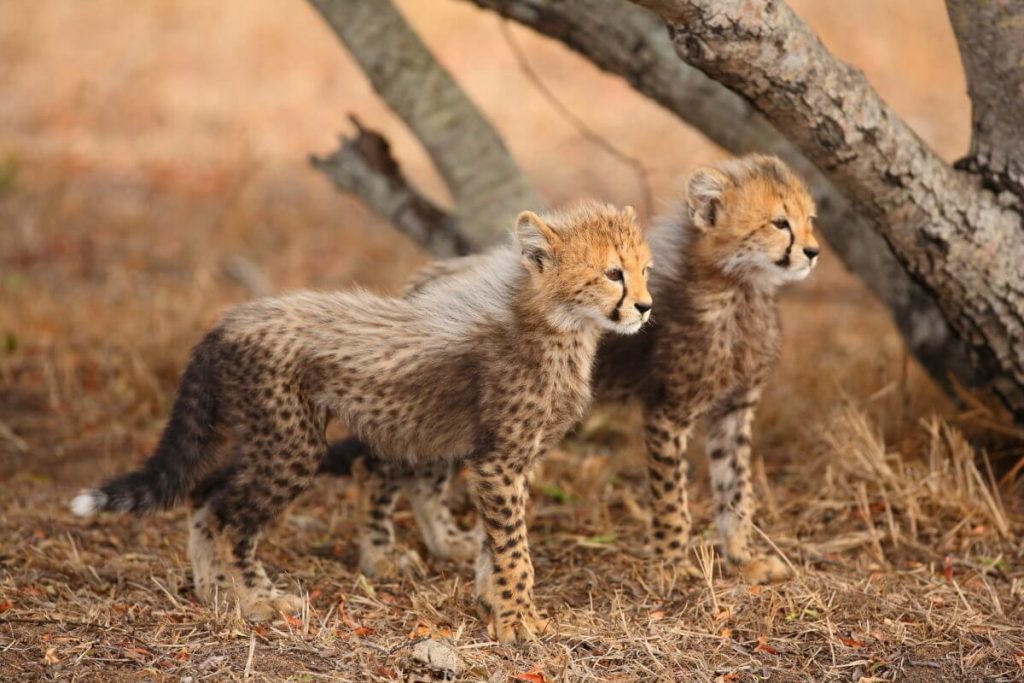
CHOBE & WETLANDS ROMANTIC TRAIL
12 nights/13 days
MAUN > OKAVANGO DELTA>MOREMI/XAKANAXA > MOREMI/KHWAI > SAVUTI>KASANE/CHOBE NATIONAL PARK
Overview
Game Drives
Mokoro excursions
Boat cruise
-
Scenic flights
-
Birding
Enjoy private and pristine candlelit dinners under the African stars in the middle of nowhere only hearing birds chanting and animals roaring. The safaris feature mokoro rides, scenic helicopter flights over the Okavango Delta and night game drives in private lodges or camps.
Daily Activity
DAY 1: MAUN
After your arrival at Maun International Airport, you will meet our representative with a signage board written “IMELA WILDERNESS”. Our guides will be waiting to transfer you to the lodge where we will be staying overnight. Maun is the gateway to one of the best wildlife experiences you will ever have – a safari in the unforgettable Okavango Delta.
DAY 2–4: OKAVANGO DELTA
At a determined time, you will be transferred to Maun International Airport where you will be met by Mack Air for your charter flight into the Okavango Delta where you will stay for 3 nights. The activities during your stay in the Delta will depend on the water levels but the majority will be water-based and you can decide to do a boat cruise, a nature walk or a mokoro ride. During times of low water, game drives will also be available. Your safari guide will explain the intricacies of the Okavango to you and share some of the stories of his childhood. You will gain a fascinating insight into one of Earth’s most pristine wilderness areas.
You will enjoy brunch at the bush camp after the morning activity and then you can relax with a spa treatment before the afternoon activity where you will experience more of the natural treasures of the Okavango. In one of the evenings you will enjoy a candle lit dinner under the African stars, a true African honeymoon experience. Night time in the Delta is full of sounds and scents of the nocturnal creatures and you can lie in bed listening to the dramas taking place.
The aquatic environment of the Okavango Delta has helped to develop a rich and complex ecosystem with thousands of tree and plant species supporting the diverse wildlife and birdlife. Common trees include ancient Baobab trees, acacia, Leadwood, Jackalbery, Marula, Sausage tree and the Knobthorn tree.
Some iconic animals found here include the sitatunga, red lichwe, wild dog, lion, hippo, elephant, buffalo, zebra, giraffe and nile crocodiles. There is also over 600 species of birds recorded in the Okavango Delta.
We will stay here for 3 nights.
DAY 5-6: MOREMI XAKANAXA
Fly directly into Xakanaxa Airstrip with the lodges preferred Charter Company although we do request that these flights land only after 12h00 in order for our guide to be there to meet you. Spending two nights camping in the Xakanaxa region, we explore the surrounding wilderness on game drives during the day.
Wildlife: From the air only the larger animals are seen easily. These include large breeding herds of African elephant that live in the mopane scrub. On the open plains large herds of buffalo and lechwe can be seen and in the waterways rafts of hippopotami are a common sight. Once you land in Xakanaxa the smaller game can be found.
Birding: A good day for raptors with African Hawk-Eagle, Gabar Goshawk, Shikra, Little Sparrowhawk, Dark Chanting Goshawk, Tawny Eagle, Lesser Spotted Eagle* and Steppe Eagle* all inhabiting the mopane and adjacent woodlands. Other birds common along this route includes most of Botswana’s hornbills including Red-billed, Southern Yellow-billed, African Grey, Bradfield’s and the Southern Ground Hornbills. A large number of brood-parasites may also be seen. Diederick Cuckoo, Levaillant’s Cuckoo, Jacobin Cuckoo, Great-spotted Cuckoo, African Cuckoo, Common Cuckoo, Shaft-tailed Whydah, Pin-tailed Whydah, Eastern Paradise Whydah, Greater Honeyguide, and Lesser Honeyguide.
DAY 7: XAKANAXA TO KHWAI (TRAVEL DAY)
Wake up and have breakfast before we depart to Moremi Game Reserve-Khwai. It is situated in the eastern part of the Okavango Delta, bordering the Chobe National Park on the south-western part of the Park. The Moremi Game Reserve covers almost one third of the Delta. The Khwai River forms a boundary between the reserve and the community area. We spend the following two nights camping at an exclusive campsite in the community area, exploring the Khwai floodplains on game drives both during the day and at night.
The Khwai region boasts excellent populations of both bull elephant as well as breeding herds. Lion, leopard, serval and African wildcat are common predators of the region with wild dog and cheetah being less common. Buffalo use this area seasonally with large herds moving in during the summer rains. The swampy areas in the west are home to red lechwe. Other ungulates include tsesebe, blue wildebeest, giraffe, kudu, sable antelope, roan antelope and impala.
Common birdlife include Mecca’s, the uncommon Rosythroated Longclaw and the Bat-Hawk. Other interesting raptors here are Cuckoo Hawk (rare), Long-crested Eagle and Black Sparrowhawk. More commonly Tawny Eagle, Steppe Eagle, Lesser-spotted Eagle, Martial Eagle, Bateleur and African Hawk-Eagle. The waterways host Africa Rail, African Crake, Greater Painted Snipe, Allen’s Gallinule, Lesser Jacana and Lesser Moorhen.
DAY 8: KHWAI
We spend our time between the dry-land habitats of the lead-wood and camel-thorn woodlands and savannahs and the riverside and marshy back-waters of the Khwai.
Wildlife: The Khwai region boasts excellent populations of both bull elephant as well as breeding herds. Lion, leopard, serval and African wildcat are common predators of the region with wild dog and cheetah being less common. Buffalo use this area seasonally with large herds moving in during the summer rains. The swampy areas in the west are home to red lechwe. Other ungulates include tsesebe, blue wildebeest, giraffe, kudu, sable antelope, roan antelope and impala.
Birding: Truly one of Botswana birding Mecca’s. The western reaches are prime habitat for the uncommon Rosy-throated Longclaw. The entire length of the river is hunting domain for the BatHawk. Other interesting raptors here are Cuckoo Hawk (rare), Longcrested Eagle and Black Sparrowhawk. More commonly Tawny Eagle, Steppe Eagle, Lesser-spotted Eagle, Martial Eagle, Bateleur and African Hawk-Eagle. The waterways host Africa Rail, African Crake, Greater Painted Snipe, Allen’s Gallinule, Lesser Jacana and Lesser Moorhen.
DAY 9-10: SAVUTI
Savuti region is situated in the southern stretch of Botswana`s Chobe national park. Recognized as a prime game viewing area in the south west of Chobe National Park. It is called Savuti because a certain chief named Savute used to live there with his tribe. The famous Savuti channel stretches south from the Chobe River through to the Mababe depression. The Savuti Marsh has been the stage for many of the most dramatic wildlife documentaries in Africa. The wide open country, good ungulate populations and particularly strong prides of lion and hyaena clans make for dramatic wildlife interaction and excellent viewing opportunities. The now dry Savuti Channel runs through this landscape linking the dry sand-veld, the waterholes, the hills and the grassland that was the Savuti Marsh.
The surface water that is pumped by the Government here provides a major attraction for birdlife. In the dry season thousands of dove and sandgrouse come down to drink in the mornings and are under constant surveillance by Yellow-billed Kite, Tawny Eagle and African Hawk-Eagle. Red-crested Korhaan are common in the Kalahari Apple-leaf (Lonchocarpus nelsii) veld. The marsh is the summer home for good numbers of Caspian Plover and Montague’s Harrier as well as Chestnut-backed Sparrowlark, Grey-backed Sparrowlark, Northern Black Korhaan, Rufous-naped Lark, African Pipit and Desert Cisticola. Dickenson’s Kestrel, Amur Falcon and Red-necked Falcon are found along the perimeter of the marsh.
The concentration of wildlife and birdlife not to mention the open plains surrounded by the dry camel thorn trees on the Savuti marsh are a wildlife photographers dream. Savuti is famous for its big game and particularly its predators. Lion and the Spotted Hyena live in constant battle for survival. Other commonly sighted species are zebra, elephant giraffe, kudu and buffalo. The scenery is amazing and very African looking, with lots of acacia tortilis with giraffe feeding and many more including the most photographed bird, lilac breasted roller. We camp wild at an exclusive campsite for 2 nights, enjoying the activities on a day to day basis.
DAY 11-12: KASANE/CHOBE NATIONAL PARK
We will leave for Chobe early to travel along the Chobe River arriving in Kasane where we will stop for a picnic lunch before taking an afternoon boat cruise. We will then spend two nights in a lodge in Kasane whilst during the day we will embark on a game drive to Chobe National Park and a boat cruise at around 1500 hrs.
The town of Kasane is situated on the banks of the Chobe River in the far north east of Botswana. It is the gateway to the Chobe National Park and also to 3 other countries, being located right at the “Four Corners. We arrive at our lodge around lunch, have lunch.
After that is siesta you may take a swim or take a rest in your room before we leave for an afternoon game drive along the Chobe River where we will see big herds of buffalos, elephants, pods of hippos, and prides of lions. Chobe is a unique park because during dry season big herds of animals congregate along the river. You will see elephants swimming from one bank to the other, buffalos crossing to the island. Get back from a beautiful game drive freshen up and have dinner- own expense. Time of going to bed is determined by the last guest.
Wake up have quick breakfast before departing for a morning game drive which is longer, you will also have an opportunity to observe the animals close. Chobe also boasts two antelopes rarely encountered elsewhere in Botswana – the puku and the Chobe bushbuck. The puku, with their shaggy orange-brown coats and V-shaped horns, can be spotted grazing the floodplains. Always on the lookout for predators, a repetitive whistle is used to warn fellow herd members. In contrast, the Chobe bushbuck is nocturnal and rarely forms groups of more than one pair. Rarely seen, this shy antelope, with its short, spiral horns relies on a sharp bark as an alarm call when threatened. Both the puku and the bushbuck have a number of predators to contend with, from lion, hyena and leopard, to African wild dog.
Get back to the lodge after a beautiful drive have brunch after that is siesta time. 15.00pm we depart for a beautiful sunset boat cruise along the Chobe river. You will see a lot of animals you will also come very close to crocodiles and pods of hippos from the boat at times we see lions from the boat you will also see big herds of buffalos. We get back to the lodge after sunset dinner is at 20.00pm at a local restaurant (own expense).
After breakfast we take a game-drive to the airstrip where you will be met by your charter flight back to Maun. Should you be flying on to a safari lodge, you can fly directly out from Khwai Airstrip to avoid returning to Maun. Please request that the lodge’s preferred air Charter Company collects you from Khwai Airstrip prior to 12h00.
DAY 13: TOUR ENDS
This marks the end of your Safari.
These Safari may start first from Chobe and run in reverse at times for operational ease. Activities are all exactly the same but do just check routing if connecting with other camps or lodges for flight routes.
Safari Accommodation
CAMPING NIGHTS:
6 nights camping
LODGING NIGHTS:
6 nights lodge accommodation
A non-participatory wild camping with en-suite facilities lodging (6 nights) combined with 6 nights lodge accommodation. During camping, Imela Wilderness will provide a bucket shower with warm water off the fire. Imela wilderness (also) provides, comfortable bedroll fully equipped with linen, towels, chairs with backrests and, tents (3×3 m meru tents), mosquito gauze on door & windows); are large and easy to erect. Imela Wilderness chef prepare fresh meals in the camp on site.
Note; All our tours are non-participatory, meaning we have enough staff to do the camp chores while you sit and enjoy your safari.
Details
Included in Your Safari
The quoted price includes all accommodation, park entry fees, excursions, and transfers.
ITINERARY INCLUDES:
- Park & Reserve entry fees
- Pick up and drop off at the airport
- Use of camping equipment (mattresses)
- Transport in 4X4 game viewing vehicle (game drive vehicle, trailer)
- Vehicle Fridge
- Tea/coffee and hot chocolate
- Professional Guide
- 2 Game drives per day
- Chef
- Mokoro activities (seasonal)
- Mokoro pooler fees
- Transfer flights
- Lodge accommodation
ITINERARY EXCLUDES:
- Scenic flight over the Okavango delta
- Boat cruise in Okavango delta
- Staff tips
- Premium wines
- Emergency evacuation
- Curios
- Insurance
- All flight tickets unless otherwise indicated
- Items of personal nature
- Any drinks at lodges or accommodation other than Imela Tented camps unless stated.
Extend Your Safari
Helicopter
Or fixed-wing scenic flight over the Okavango
Multi-day extension
To a lodge in the Okavango Delta
Multi-day extension
To a lodge in the Chobe region
Extension
To Victoria Falls
Easy Payment Options
40% Deposit to confirm booking. Balance due 6 weeks prior to departure.
